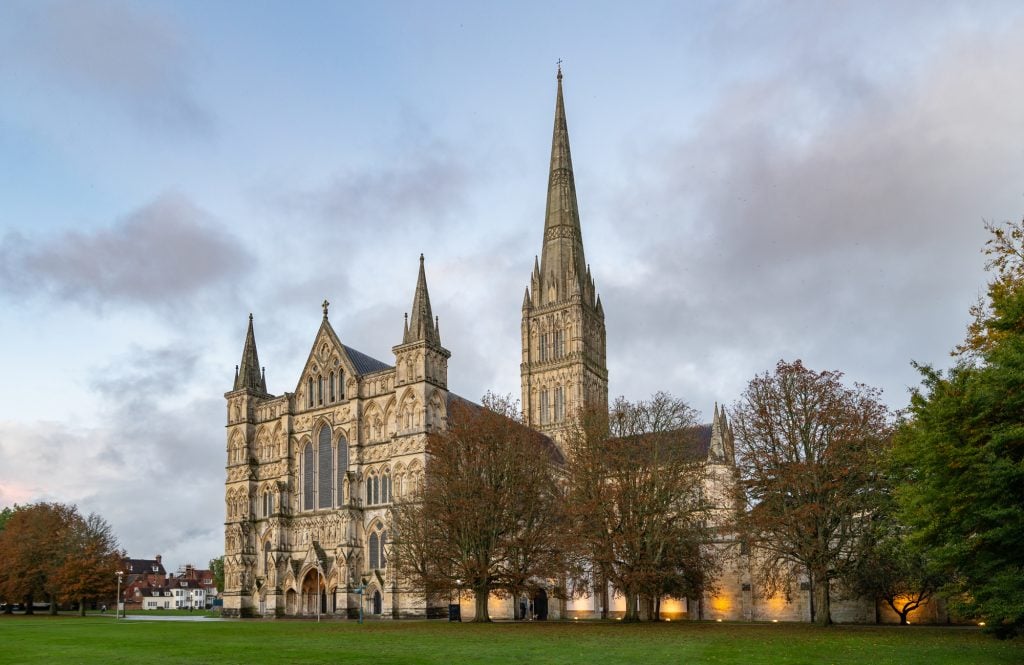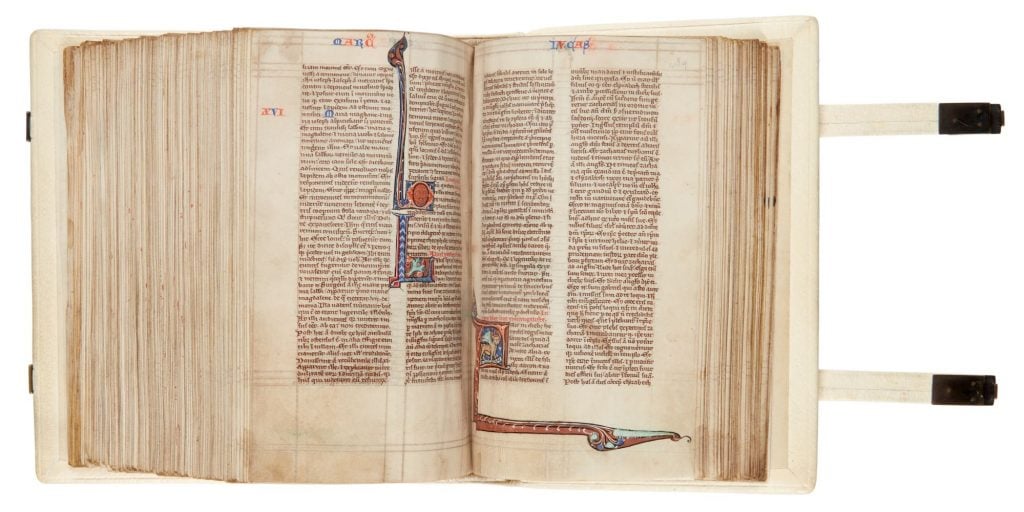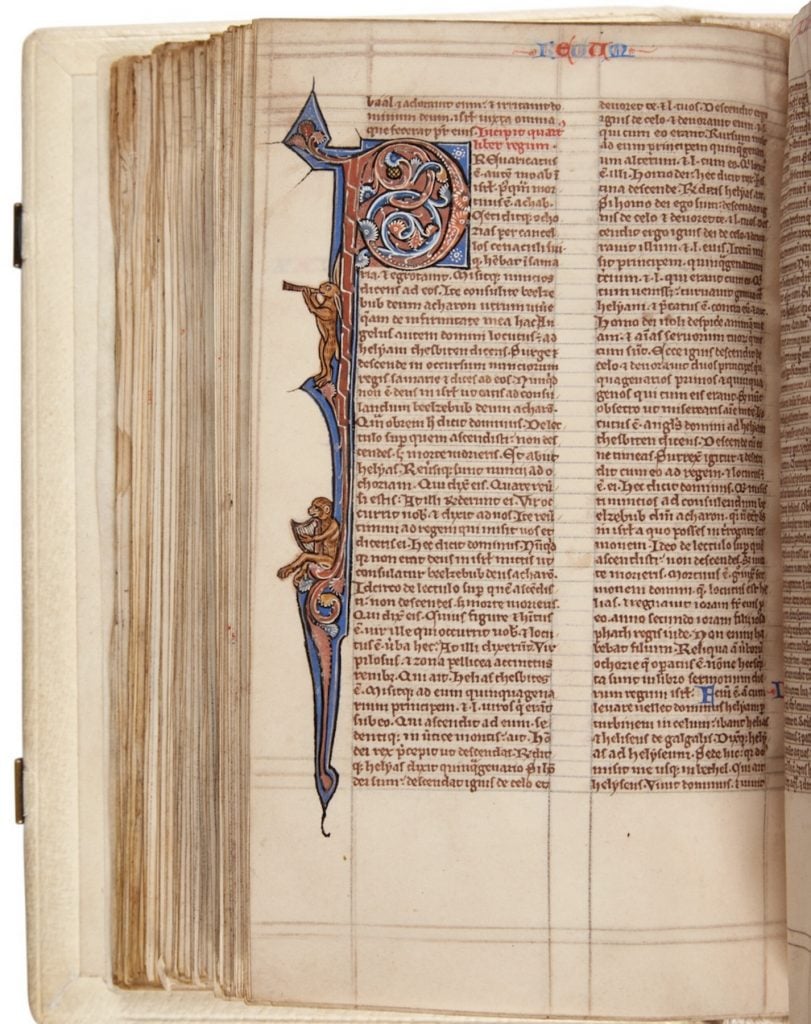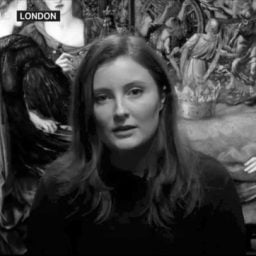Museums & Institutions
$115,000 Fundraiser Launched to Reclaim Salisbury Cathedral’s Rare Medieval Bible
Created by the medieval artist Sarum Master, the bible is being sold by Sotheby's.

Salisbury Cathedral in the west of England is a magnificent Gothic landmark that, with a spire rising over 400 feet, stands proud as a vestige of the early Gothic era. At that time, in a local workshop, an exceptionally rare 13th century bible was produced for the cathedral by the acclaimed medieval artist Sarum Master.
Now, a new campaign by Friends of National Libraries (FNL) is aiming to raise the £90,000 ($115,000) needed to return the literary treasure to its ancestral home, the library of Salisbury Cathedral. It has been given only 90 days to do so before the manuscript, currently in private hands, is sold via Sotheby’s to another buyer.
The campaign is already off to a good start, having received a generous donation of £10,000 ($12,750) from the Old Possum’s Practical Trust, a charity founded in 1990 by Valerie Eliot, wife of the famed poet T.S. Eliot. It is named for Old Possum’s Book of Practical Cats (1939), a poetry collection by Eliot that delights in feline psychology that inspired the smash hit musical Cats by Andrew Lloyd-Webber. It is endowed with proceeds from the musical and gives out grants amounting to approximately £250,000 ($320,000) each year.
“We would like to see this extraordinary book returned to where it was originally written,” said a spokesperson for the T.S. Eliot estate. “It feels like poetic justice for this jewel of a manuscript to return seven centuries after it was written and illuminated on vellum.”

The Sarum Master bible made in 13th century England. Photo: © Sotheby’s.
The illuminated manuscript is one of only six that are definitively attributed to Sarum Master, with the other five already in other public collections in the U.K.
“The Sarum Master was one of the earliest manuscript artists in England of whom we have a recognizable oeuvre,” said medieval manuscripts expert Christopher de Hamel.
He inhabited the small picturesque city of Salisbury when it was a thriving hub of scholarly and artistic activity rivaled only by Oxford and London. However, neither the city nor cathedral of Salisbury have a work by Sarum Master in their collections.
“Salisbury had been founded as a new town in the 1220s, and there were artists working on the stained-glass and chapter- house carvings of the new cathedral,” said de Hamel.
He added that because Salisbury had a book trade and a cathedral, Salisbury manuscripts were available for purchase and local liturgy were therefore adopted across all of southern England, even going on to influence the development of the Book of Common Prayer after the Reformation.

The Sarum Master Bible. © Sotheby’s
“The artistry of the Sarum Master speaks to a centuries long tradition of creativity at Salisbury,” said the very reverend Nicholas Papadopulos, dean of Salisbury. “We are delighted at the prospect of being able to share this treasure with visitors to the Cathedral Library in the future.”
Meanwhile, the U.K.’s cultural secretary, Lisa Nandy, praised the campaign as showing “our country at its best.” She added, “I applaud and give my full support to the charities involved for stepping in to save a masterpiece of bibliographical, artistic, and religious content.”
The Salisbury Cathedral Library was founded in 1445 and is home to manuscripts dating back as early as the 9th century and thousands of rare printed books produced from the 15th century onwards. Most notably, the cathedral is home to one of only four surviving copies of the 1215 Magna Carta, a foundational royal charter establishing that the King and his government was not above the law, thus preventing them from abusing their powers.
Since 1931, the FNL has awarded grants to national and specialist collecting libraries to support them in acquiring and preserving the U.K.’s written and printed heritage, including rare books, manuscripts, and archives that may otherwise go into private hands.





